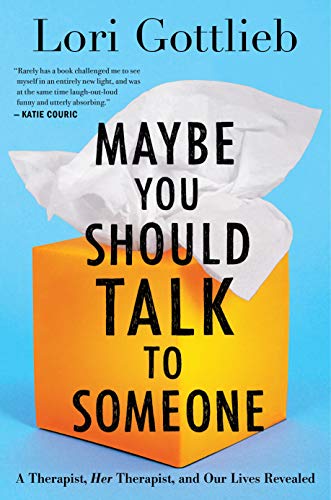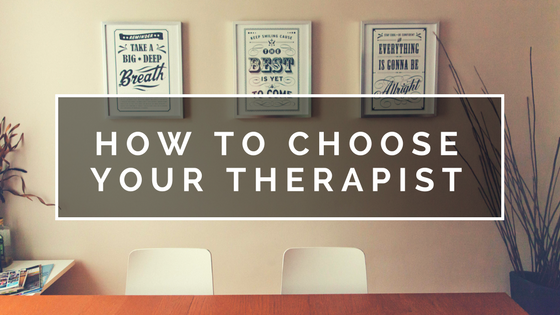There’s an old adage in the therapy world that therapists are best equipped to help others walk through difficult experiences when we’ve done our own therapeutic work. It can seem strange to imagine your therapist getting help, but the truth is that many of us do. And when we do, it makes us better at helping others.
Lori Gottlieb is a psychotherapist who entered the field later in life. While she was a therapist in private practice, she ran into her own personal issues and decided it was time for her to seek out therapy for herself. This is the story of her parallel process: what she was experiencing in her own therapy and personal life and how those were impacted by what was happening in her sessions with her patients.
As a therapist myself, this book resonated with me deeply. In some ways, it felt like my own personal diary. Hearing her walk through her struggles and describe them in clinical language that is familiar to me from grad school helped me to relate even more deeply to the story. This book reminded me of things I know but often forget about my field of work and practicing psychotherapy.
At the same time, there were elements that were tough and challenged me as a therapist. Reading this book helped me humbly reconsider the way I approach therapy and run my sessions.
Whether you are currently in therapy, are considering beginning now, or are a therapist who is hoping to begin your own journey through therapy, I’d recommend taking a glance at this book. Here are a few of my takeaways.
Good therapists are self-aware enough to seek out their own therapy when needed.
We all go through difficulties in life and moments of grief or trauma, including therapists. Therapists especially need of extra support because we are holding the pain of the stories of the people we help.
What therapists learn from their own experiences in therapy informs their work with you. You can often feel it in how they hold themselves in sessions. In fact, I recommend you ask your therapist if he or she does their own therapy to find out this fact.
Most of our problems boil down to relationships and connection (or lack thereof) with others.
Think about what you seek out help for in therapy. How many of those issues are directly or indirectly related to relationships? The therapeutic relationship becomes essential in healing when you realize this fact.
Your therapist likely genuinely loves and cares for you. You share a lot of vulnerable parts of your story with them, which invites intimacy. I feel that way about my own clients.
The therapeutic relationship also provides a corrective process to “repetition compulsion.” Repetition compulsion involves looking to receive love in the same way you did from parents as a child, even though it may have been abusive or harmful, because that feels normal. Therapy can teach you that it feels good to be cared for and loved in a healthy way.
Good work in therapy is slower than you might expect.
Patience is a skill that is both developed by participating in psychotherapy and also needs to continue developing as healing happens on its own timeline. You’ll take many small steps toward health over a long period of time. Gottlieb says, “A supervisor once likened doing psychotherapy to undergoing physical therapy. It can be difficult and cause pain, and your condition can worsen before it improves, but if you go consistently and work hard when you’re there, you’ll get the kinks out and function so much better.” Each of those small steps or transformations has a big impact.
“Most big transformations come about from the hundreds of tiny, almost imperceptible, steps we take along the way.”
Don’t be afraid to show your vulnerabilities.
Gottlieb says that patients often put on their best faces in therapy when what psychotherapists want is to see the real, human parts of who you are. We want to see what’s not working, and that usually means you’ll have to engage with uncomfortable feelings and face the parts you’re hiding in the process.
In a story Gottlieb shares about her own therapist, she says that his eyes communicate a clear message to her. “In this room I’m going to see you, and you’ll try to hide, but I’ll still see you and it’s going to be okay when I do.” This is the essence of a strong therapeutic relationship, and it is what I aim for.
I expect that there will be resistance in therapy: lying, posturing, hiding parts of yourself. You’re going to be trying to maintain an illusion, and my goal is to break through it. It’s okay if you resist this process: it can feel vulnerable and uncomfortable. Recognize the resistance when it comes, and be willing to talk about it.
Acceptance is the key to healing.
This book explores the concept of acceptance in depth. She learns to accept the fact that she doesn’t always know why she does what she does. Not everything will end with a neat and tidy bow, because that isn’t realistic. In therapy, you’ll learn how to recognize and accept feelings, including anger, and what lies underneath those emotions. You’ll come to understand your resistance, avoidance, and hesitancy.
You’ll learn about how you picked up coping mechanisms to survive when you were younger that may no longer be the best choice for you. What are you using to protect yourself and avoid reality? Instead of being afraid and denying these things, accept that they are there and be curious about what they have to teach you.
One pattern I notice in clients is that they beat themselves up for feeling pain when they compare their lives to how difficult others have it around the world. If you have this thought, realize that it is not fair to you and not fair to your experience of pain to compare like this. Gottlieb repeats several times in this book that, “There is no hierarchy of pain.” What you’re facing is what you’re facing, and it’s affecting you differently than it would anyone else. It’s fruitless to compare it to someone else and come up feeling bad about yourself for hurting.
You are the one doing the work of therapy.
Therapy is about a series of small steps you take to heal. I, or any other therapist for that matter, can’t do this work for you. It would actually hurt you if I tried. I can’t save you – you need to learn to come to your own rescue. I can’t make choices for you, and you’ll find that I often counter requests for advice with further questions. Giving advice hurts rather than helps: you need to come to your own decisions.
This book taught me to be more reflective about what happens in my sessions with my clients and to integrate who they are as a person into what causes distress for them. When I have a good understanding of who is sitting across from me, I can allow them to do the hard work of therapy and simply gently guide them in the direction.
“Rather than steering people straight to the heart of the problem, we nudge them to arrive there on their own, because the most powerful truths – the ones people take the most seriously – are those they come to, little by little, on their own.”
And finally, learn to be kind to yourself.
As Gottlieb reminds us, “Most of what we say to ourselves we’d never say to people we love or care about, like our friends or children. In therapy, we learn to pay close attention to those voices in our heads so that we can learn a better way to communicate with ourselves.” Practice kindness toward yourself by changing the words you use to speak to yourself into ones you might share with a loved one instead.








